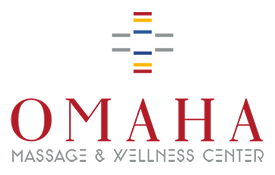Myofascia – What is Myofascia?
‘Myofascia.’ It may sound vaguely familiar. But, what is it?
Often referred to as the ‘bodysuit,’ or fascia. It is a dense and tough connective tissue that covers, supports, and separates all the muscles, ligaments, tendons, internal organs, and bones in the body. Think of that shiny white film-like coating that covers raw chicken. Fascia is the thin layer between the skin and other tissues.
Fascia, more specifically, is the flexible connective tissue surrounding the muscles. ‘Myofascia’ literally translates to ‘muscle band.’ Under a microscope, the myofascia intertwines and resembles a spider web like appearance. It is continuous and covers the body from head to toe. Healthy myofascia is relaxed and easily moves with muscle tissue, without limiting mobility. It, further, can help maintain proper posture and protect the body against stress related injuries.
However, fascia can cause tenderness and pain due to damaged or tight muscles, or due to direct injury to the fascia. Its elasticity may become reduced when injured and it may restrict the range of motion.
How can the myofascia become damaged?
The myofascia can become damaged due to direct trauma from a fall, irritation and inflammation from repetitive movements, stress, sports injuries, or poor posture.
Myofascial trigger points may develop when the myofascia tissue is damaged. The trigger points can cause contractions of the surrounding muscle fibers. They can be tender to touch and are often referred to as ‘knots’ in the body. Although trigger points often occur from another underlying issue, muscles pains and headaches can be further consequences of damaged myofascial tissue. In more severe cases, sciatica, chronic back pain, breathing difficulties, or numbness and tingling may occur.
How can injury to the myofascia be treated?
Massage therapy and physiotherapy are viable treatment methods to reduce and eliminate myofascia pain. Massage therapists and physiotherapists can help identify the root of the problem and facilitate a treatment plan for recovery.
Therapists may use therapeutic techniques, such as myofascial release or Deep Tissue massage, which can address painful trigger points and release the associated tension and pain. Myofascial release is a safe hands-on technique used by therapists to release muscle tension. Via the application of direct pressure on the tender points, it can lengthen and stretch out the irritated fascia points, break down scar tissue, relax tense muscles, and improve circulation. Massage, in combination with heat therapy, can increase blood flow to the affected area, release tension, and reduce inflammation. Strengthening and stretching exercises may further be prescribed to tackle muscle imbalances and help relieve tight muscles.
How can injury to the myofascia be prevented?
Taking care of yourself is step one. It is recommended to minimize stress, avoid re-injury, maintain proper posture, and get the recommended 7-9 hours of sleep a night to reduce the risk of damage to the myofascia tissue. If an injury does occur, take the time to get better. Consult your local healthcare provider and get your health back on track starting today.
You can contact us today to schedule your Deep Tissue Massage. Click Here to get in touch with us.







